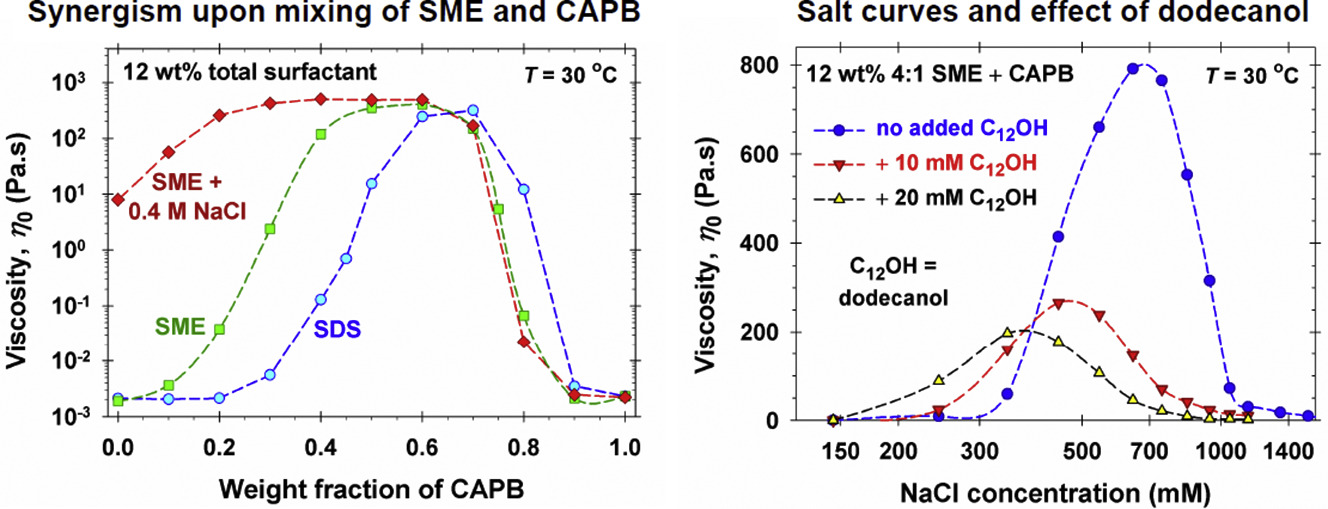Rheology of mixed solutions of sulfonated methyl esters and betaine in relation to the growth of giant micelles and shampoo applications

This is a review article on the rheological properties of mixed solutions of sulfonated methyl esters (SME) and cocamidopropyl betaine (CAPB), which are related to the synergistic growth of giant micelles. Effects of additives, such as fatty alcohols, cocamide monoethanolamine (CMEA) and salt, which are expected to boost the growth of wormlike micelles, are studied. We report and systematize the most significant observed effects with an emphasis on the interpretation at molecular level and understanding the rheological behavior of these systems. The experiments show that the mixing of SME and CAPB produces a significant rise of viscosity, which is greater than in the mixed solutions of sodium dodecyl sulfate and CAPB. The addition of fatty alcohols, CMEA and cationic polymer, leads to broadening of the synergistic peak in viscosity without any pronounced effect on its height. The addition of NaCl leads to a typical salt curve with high maximum, but in the presence of dodecanol this maximum is much lower. At lower salt concentrations, the fatty alcohol acts as a thickener, whereas at higher salt concentrations – as a thinning agent. Depending on the shape of the frequency dependences of the measured storage and loss moduli, G’ and G”, the investigated micellar solutions behave as systems of standard or nonstandard rheological behavior. The systems with standard behavior obey the Maxwell viscoelastic model (at least) up to the crossover point (G’ = G”) and can be analyzed in terms of the Cates reptation-reaction model. The systems with nonstandard rheological behavior obey the Maxwell model only in a restricted domain below the crossover frequency; they can be analyzed in the framework of an augmented version of the Maxwell model. The methodology for data analysis and interpretation could be applied to any other viscoelastic micellar system.

